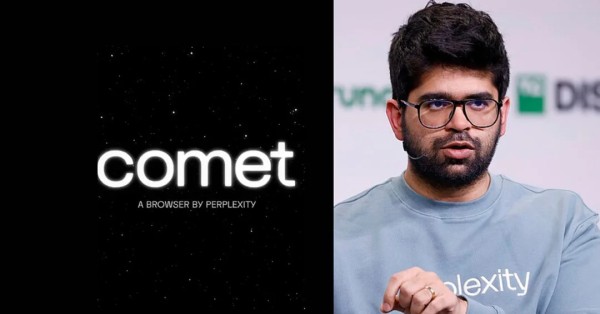Perplexity has launched Comet, its first AI-powered web browser, taking another bold step in its mission to challenge Google and Microsoft in the consumer internet market.
Targeting Search With a New AI Browser
On Wednesday, the fast-growing startup announced that Comet will first be available to subscribers of its premium $200-per-month Max plan, along with a limited group of invite-only users who joined a waitlist. With Comet, Perplexity aims to integrate its AI technology at the core of everyday browsing, not just as a search tool, but as a personal assistant embedded directly within the browser.
How Perplexity Comet AI Browser Works
At its core, Comet uses Perplexity’s AI-powered search engine as the default. This engine automatically generates concise summaries of search results, making it easier for users to get quick, relevant information without wading through multiple pages.
The standout feature is Comet Assistant, an integrated AI agent that helps automate routine tasks. From summarizing emails and calendar events to managing browser tabs and navigating webpages, the assistant aims to act as an extra pair of hands. Users can interact with it directly in a sidebar, giving the assistant live context of what’s on-screen to answer questions in real-time.
Comet AI Assistant: Voice, Text & Workplace Integrations
Beyond standard web browsing, Comet connects with popular enterprise applications like Slack, expanding its usefulness for professionals who need help managing workplace tasks. Users can issue commands and ask complex questions via voice or text, enabling the AI to interact seamlessly across multiple apps.
Perplexity says this functionality is part of its vision to turn Comet into what CEO Aravind Srinivas once described as an “operating system for the internet” — a single tool that amplifies user productivity by weaving AI into everyday workflows.
Aiming for Direct User Relationships With Comet Browser
By releasing Comet as a stand-alone browser, Perplexity wants to reach users directly, sidestepping dominant browsers like Google Chrome and Apple Safari. The company hopes that becoming the default browsing tool will translate into higher retention and greater user engagement with its core AI services.
This move comes at a time when AI-powered browsers are gaining traction. Competitors like The Browser Company’s Dia, launched just last month, promise similar AI integrations. Even OpenAI has reportedly explored launching its own browser, hiring talent from the original Chrome team.
Comet AI Browser Launch: Early Access & Pricing
Currently, Comet access is limited to Max plan subscribers. Over the summer, Perplexity will gradually expand access to those on its waitlist. The Max plan costs $200 per month, positioning Comet firmly in the premium tier of AI offerings.
Recent reports suggest Perplexity is not slowing down anytime soon. In May, the startup was reportedly in late-stage talks to raise $500 million at a $14 billion valuation. Meta even explored acquiring Perplexity earlier this year, though talks did not result in a deal.
Hands-On With Comet Assistant
Early users say Comet Assistant works best for straightforward tasks. For example, it can answer questions about social media posts, summarize new emails, or highlight upcoming calendar events. This can streamline repetitive work that usually clutters the day.
However, the assistant still struggles with more complex requests. During testing, the AI agent made errors when asked to book a parking spot, entering incorrect dates and failing to adjust when corrected. Such mistakes echo the broader challenge facing many AI agents today: hallucinations that derail workflows.
To use Comet Assistant fully, users also need to grant significant permissions, like access to emails and calendars. While this level of access enables smarter assistance, it also raises understandable privacy concerns.
Why Comet Could Redefine AI Browsing
Despite these hurdles, Perplexity’s bet is clear: people want their browsers to do more than display webpages. By embedding a proactive AI agent, Comet aims to eliminate the friction between searching, summarizing, and acting on information — all in one place.
While Google and Microsoft continue pushing their own AI features in Chrome and Edge, Perplexity is trying to build something different. Its team sees Comet not as just a tool for web search but as the front line of its mission to redefine how people use the internet.
As Perplexity wrote in a recent blog post, “We built Comet to let the internet do what it has been begging to do: to amplify our intelligence.”
Whether that promise convinces users to switch from tried-and-true browsers remains to be seen. But one thing is certain: the race to own the next era of AI-driven browsing is officially underway.







































